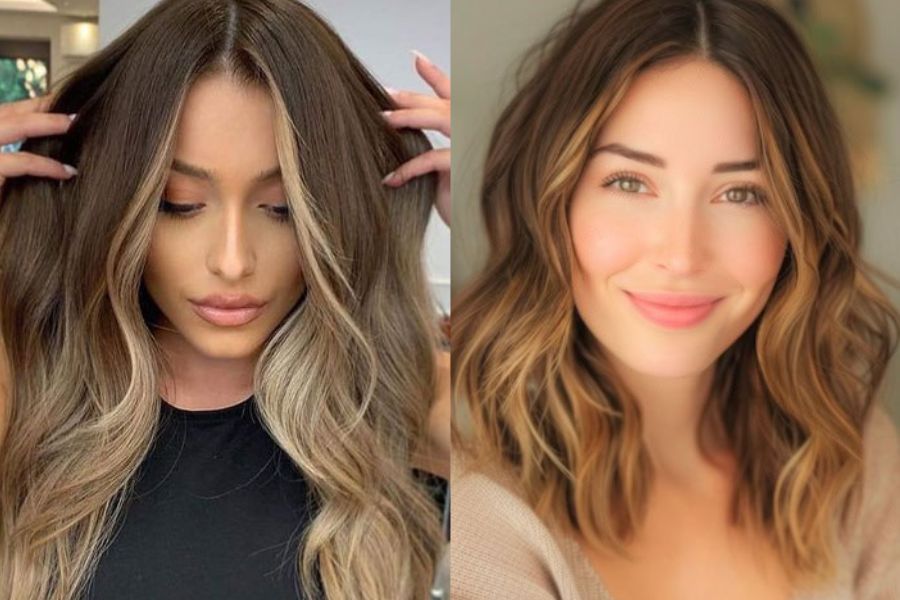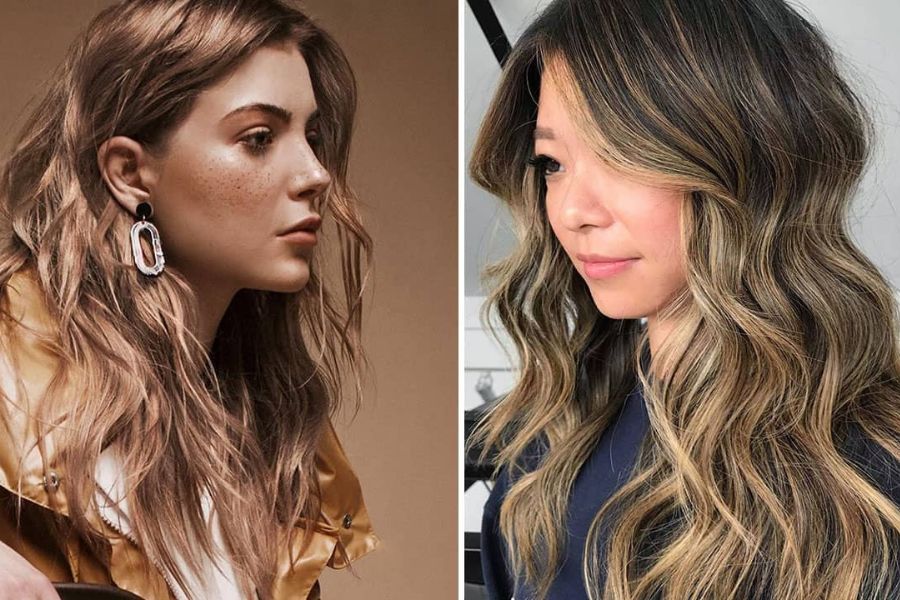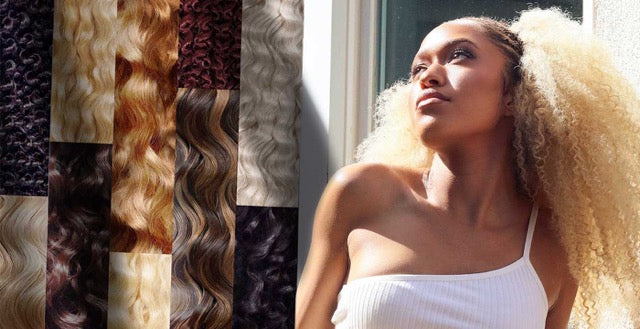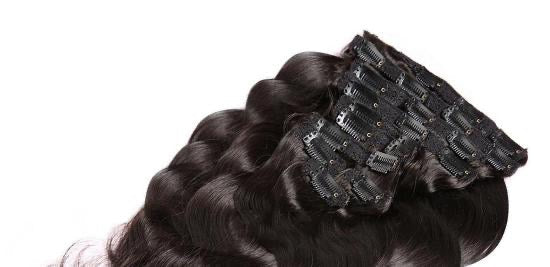Hair Extensions for Hair Loss: Types & Their Usage

Key Takeaways
- After giving birth, many women experience dramatic shedding due to hormonal changes. Clip-in or tape-in extensions provide a safe, non-permanent way to regain fullness while your natural hair grows back.
- For crown or part-line thinning, hair toppers offer targeted coverage. For overall thin hair, tape-in and keratin bond extensions distribute weight evenly, preventing stress on fragile roots.
- Choosing premium-quality extensions, like those at Livicor Hair, helps prevent breakage and ensures a natural blend. Always consult with a stylist to match the right method to your hair type and loss pattern.

Hair extension for hair loss
Ready to feel confident again? Discover Livicor Hair’s premium range of hair extensions specially designed for hair loss. Whether you're dealing with postpartum shedding, thinning hair, or just want more volume, we’ve got a gentle, beautiful solution for you.
Understanding Hair Loss in Women
Hair loss affects millions of women worldwide, and it's more common than you might think. Understanding the root cause of your hair loss is the first step in choosing the right solution.
1. Postpartum Hair Loss
After childbirth, many new mothers experience what feels like alarming hair loss. This condition, called postpartum alopecia, occurs due to dramatic hormonal shifts after delivery.
During pregnancy, elevated hormone levels keep hair in the growth phase longer, giving you that coveted "pregnancy glow" hair. However, after birth, these hormones plummet, causing a significant amount of hair to enter the shedding phase simultaneously.
This shedding typically peaks around 3–6 months postpartum and can last up to a year. While this process is completely natural, it can leave new mothers feeling self-conscious during an already challenging time. Hair extensions can provide the coverage and volume you need during postpartum hair loss, allowing your hair to recover naturally.

Postpartum Hair Loss. Source: Katie McGihon
2. Genetic or Age-Related Thinning
As women age, hair naturally becomes finer and thinner. This process often begins in the late twenties or early thirties and gradually progresses over time. The hair around the crown and part line is typically affected first, creating a widening part or visible scalp areas.
Female pattern hair loss, also known as androgenetic alopecia, affects up to 40% of women by age 50. Unlike male pattern baldness, women rarely experience complete baldness but instead notice gradual thinning throughout the top of the scalp.

Hair thinning. Source: ThriveCo
3. Medical Conditions and Stress
Various medical conditions, medications, and high-stress periods can trigger both temporary and long-term hair loss. Conditions like thyroid disorders, autoimmune diseases, and hormonal imbalances can significantly impact hair growth.
Additionally, certain medications, including those for cancer treatment, blood pressure, and depression, may cause hair thinning as a side effect.
High-stress periods, whether from work, relationships, or major life changes, can also trigger a condition called telogen effluvium, causing widespread hair shedding that typically occurs 2-3 months after the stressful event.

Stress hair loss. Source: Este Medical Group
While these changes are medically normal, they can still be emotionally distressing. Hair extensions for women experiencing hair loss can serve as a temporary solution to help you feel more confident while your hair recovers, or as a long-term solution for ongoing thinning.
Best Types of Hair Extensions for Hair Loss
Not all extensions are created equal, especially when it comes to dealing with fragile or thinning hair. The key is selecting lightweight, gentle options that won't strain your natural strands or cause additional damage.
1. Clip-In Extensions
Clip-in extensions are among the most popular choices for their versatility and ease of use. These temporary extensions can be applied and removed at home, making them ideal for special occasions or everyday wear when you need a boost of confidence.
Benefits for hair loss:
- No permanent commitment
- Can be positioned strategically to cover thin areas
- Easy to remove before bed to prevent tension on fragile hair
- Available in various lengths and colors

When choosing clip-ins for thinning hair, look for options with smaller, gentler clips that evenly distribute the weight. High-quality clip-ins, designed specifically for fine or thin hair, will feature softer clips that won't pull or damage your existing strands.
2. Tape-In Extensions
Tape-in extensions are semi-permanent extensions applied by a professional stylist. They consist of pre-taped wefts that are sandwiched around small sections of your natural hair. These extensions lie flat against the scalp, offering a natural look and feel that's virtually undetectable.
Why they work for hair loss:
- Lightweight and comfortable for extended wear
- Distribute weight evenly across the scalp
- Can be strategically placed to add volume where needed most
- The last 6-8 weeks with proper care
Tape-ins are particularly suitable for those with moderate thinning, providing significant volume without excessive weight that could stress remaining hair.

3. Keratin Bond Extensions
Keratin bond extensions involve attaching individual strands to your natural hair using a keratin-based adhesive. This method enables a highly customized approach, which is particularly beneficial for targeting specific areas of thinning.
Advantages for hair loss:
- Individual strand application allows for precise placement
- Keratin bonds are gentle and won't damage existing hair
- Long-lasting solution (3-4 months)
- Blend seamlessly with natural hair texture
This method works particularly well for women with patchy hair loss or those who need extensions in specific areas rather than overall volume.

4. Hair Toppers
Hair toppers, also known as hairpieces or wigs, are ideal for covering larger areas of thinning hair, particularly at the crown or part line. These pieces clip onto your existing hair, providing instant volume and coverage exactly where you need it most.
Perfect for:
- Crown thinning
- Widening part lines
- Overall top-of-head volume loss
- Quick, temporary coverage
Toppers come in various sizes and styles to match your hair texture and color perfectly. They're an excellent option for women who want targeted coverage without the commitment of full extensions.

How To Find The Best Hair Extensions For Hair Loss
1. Work with a Professional
While some extensions can be applied at home, working with a stylist experienced in hair loss is invaluable. They can assess your specific situation, recommend the best type of extensions, and ensure proper application that won't cause additional damage.
2. Prioritize Hair Health
Continue caring for your natural hair while wearing extensions. Use gentle, sulfate-free shampoos, avoid excessive heat styling, and consider supplements that support hair growth (with your doctor's approval).
3. Start Small
If you're new to extensions, start with a smaller commitment, such as clip-ins or a hair topper. This allows you to experiment with different styles and determine what works best for your lifestyle before investing in more permanent options.
4. Choose Quality
When looking for the best hair extensions for hair loss, quality matters more than ever. Cheap extensions can cause more harm than good to already fragile hair. Invest in high-quality, ethically sourced hair that blends naturally and lasts longer.
Frequently Asked Questions
1. Can you get hair extensions for hair loss?
Yes, you can use hair extensions to help with hair loss. They’re a great way to add volume and make your hair look fuller while your natural hair recovers. Extensions are especially helpful for thinning spots or overall thin hair, but it's important to choose gentle options that won’t cause more damage.
2. What extensions are best for hair loss?
The best extensions for hair loss are lightweight and gentle on your scalp. Clip-in toppers, tape-in extensions, and halo extensions are popular because they don’t pull too much on your natural hair. These types are great for adding volume without stressing weak or thinning hair.
3. What are the best extensions for thinning hair?
For thinning hair, tape-in and clip-in extensions are often the best options. They’re light, blend well, and don’t add too much pressure on your hair roots. Hair toppers also work well if you're experiencing hair loss at the crown or part line, providing full coverage and a natural appearance.
4. What is the least damaging hair extension method?
Halo extensions are the least damaging because they don’t attach to your natural hair but sit on your head like a headband. Clip-in extensions are also a low-risk option if used properly and not worn daily. Avoid glue or heavy bonding methods if your hair is thin or fragile.







Comments